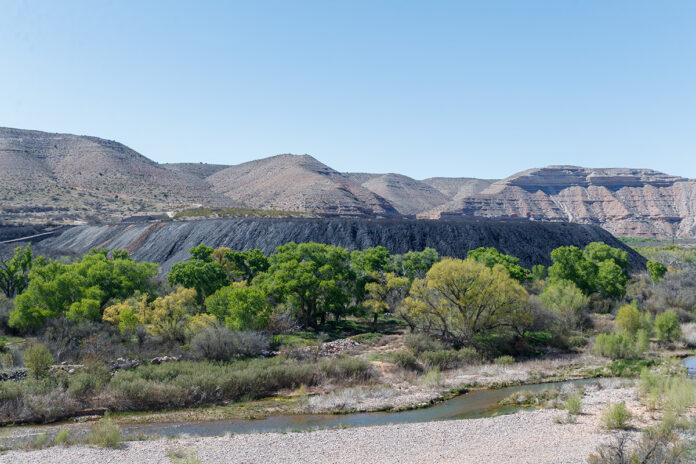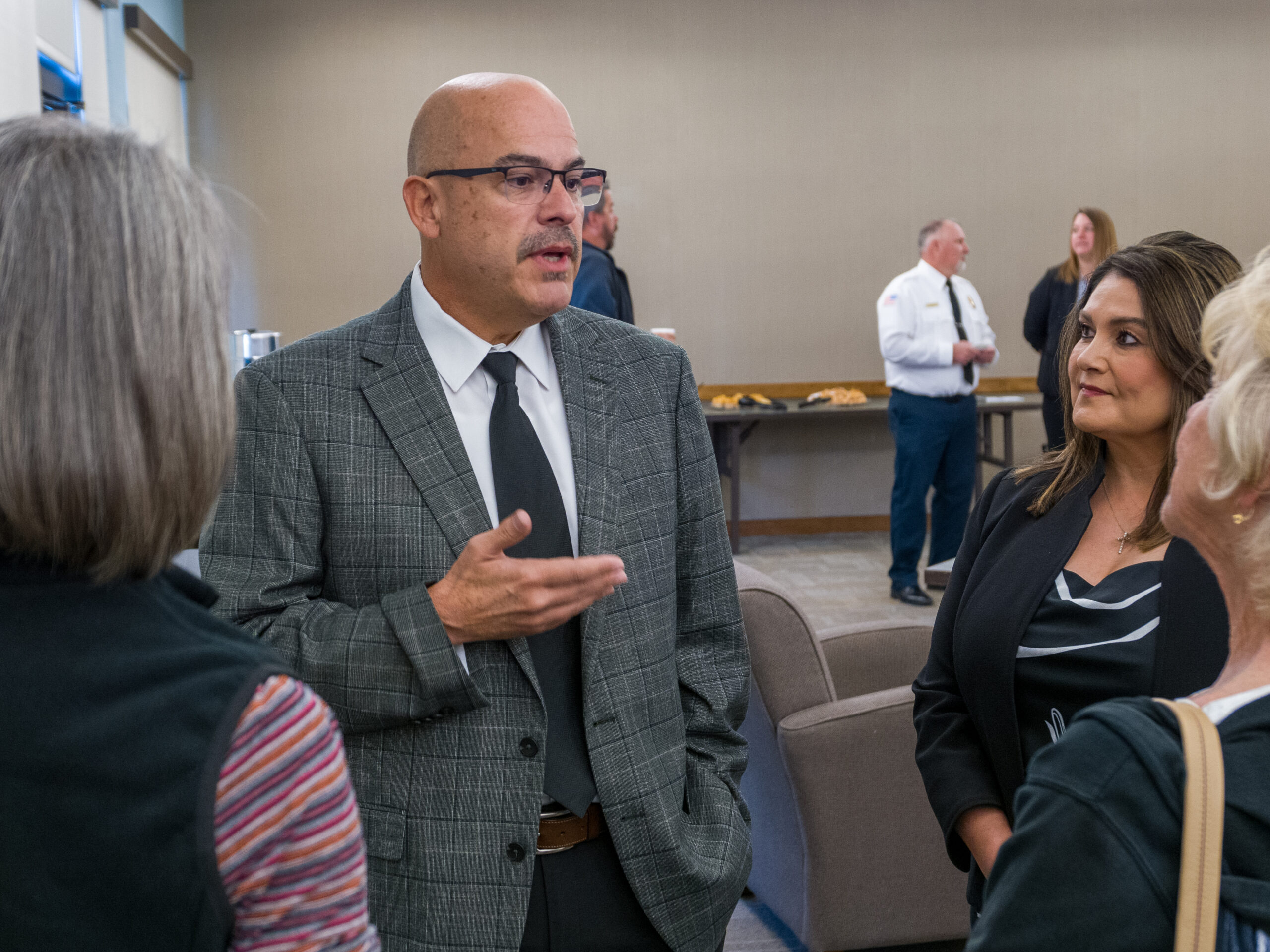Shaida Sina, a naturopath at a clinic in Cottonwood, gave a lecture on mining in the Verde Valley and its effects on health at the Clemenceau Gym on April 6.
The keynote speaker was Yavapai County District 3 Supervisor Donna Michaels, who spoke about the history of mining in the Verde Valley.
The first mining claim in the valley was staked in Jerome in 1876. Later, there were three smelters in the valley in Clarkdale, Jerome and Cottonwood, which operated for 70 years. The United Verde mine produced two billion tons of copper, gold and silver.
The Jerome smelter ran for 30 years before the smelter in Clarkdale was built. William A. Clark, founder of Clarkdale, intentionally built the smelter near a river and built a dam to impound the body of water that is now called Peck’s Lake. Demolished in 1966, the dam left behind 20 million tons of tailings 100 feet tall covering 45 acres, Michaels said. In 2015, remediation ponds were built in Jerome at the base of the mining operations to help improve the water quality.
James S. Douglas, founder of the United Verde Extension, built a smelter south of Jerome and named the area Clemenceau. The Clemenceau smelter and UVX operation ran from 1913 to 1937. Michaels said that no vegetation survives surrounding this smelter area and that it left behind 3 million tons of mining waste that now sits behind the VFW and is known as the Cottonwood slag pile. The smelter closed in 1940.
Michaels showed an image from 2019 of the tailings pile in Clarkdale that depicted no containment fencing between the ore field and the Verde River.
“I am deeply concerned about this,” Michaels said. “Is there a correlation? … I think that’s something we need to find out.”
Raina Maier, Ph.D., a professor of environmental science at the University of Arizona, also gave a talk on the “University of Arizona’s Environmental and Health Research and Resources Related to Mining.”
The university is a research center within the Environmental Protection Agency’s Superfund program that addresses abandoned hazardous waste sites and includes a Center for Environmentally Sustainable Mining that aims to develop research initiatives and environmental education related to mining, especially in arid and semi-arid environments.
Maier discussed the program’s projects dealing with revegetation efforts, metal recovery and dust control.
At the Iron King mine and Dewey-Humboldt smelter Superfund site, which had high concentrations of arsenic and lead in the soil, making it acidic and preventing plant growth, they successfully blended manure into the mining tailings to facilitate plant growth. Tailings are spread by wind and vegetation helps trap dust, and the research team found that a small amount of canopy cover was enough to prevent the spread of tailings. Maier used the study to emphasize revegetating mined areas so that potentially harmful slag dust is reduced in neighboring communities and ecosystems, or prevented from causing health and environmental issues.
Mónica Ramírez-Andreotta, Ph.D., an associate professor of environmental science and public health at the University of Arizona, then gave a talk on “Environmental Health Science Research with Mining Communities” in which she discussed Gardenroots, a project she started to determine whether home garden vegetables grown in Dewey-Humboldt had higher levels of arsenic and to encourage community involvement.
She was followed by Ginny de LaCruz, a childhood lead poisoning prevention program manager at the Arizona Department of Health Services who talked about lead exposure. De LaCruz said that most lead exposure comes from human activities and that children under age 6 are most at risk due to having higher absorption rates than adults and frequent hand-to-mouth activities.
The greatest risk for children from lead exposure is slowed growth and brain development, and damage to the central nervous system.
Sources of lead in the environment can include soil, antiques, lead based paint, certain jobs and hobbies, imported spices and imported glazed pottery.
De LaCruz said that the Centers for Disease Control and Prevention recommend children get tested for lead when they are 1 and 2 years old and that, since symptoms often don’t show, testing is necessary to detect lead exposure.
She recommended reducing exposure to lead and slag dust by cleaning frequently, including wet wiping dust, using a HEPA filter in a vacuum, frequently washing kids’ toys, not opening windows and not eating outdoors. She recommended limiting the amount of slag dust brought into the home by taking off coats and shoes, bathing pets often, keeping windows closed on windy days and ensuring the ventilation system works properly.
To limit the amount of slag dust ingested, she recommended washing fruits and vegetables, avoiding eating in areas with visible slag dust, avoiding playing outside on windy days, and limiting time kids spend playing in dirt. She also recommended using raised garden beds with clean soil, wearing gloves, washing produce and peeling it, and dampening soil with water before gardening to reduce slag dust inhalation.



